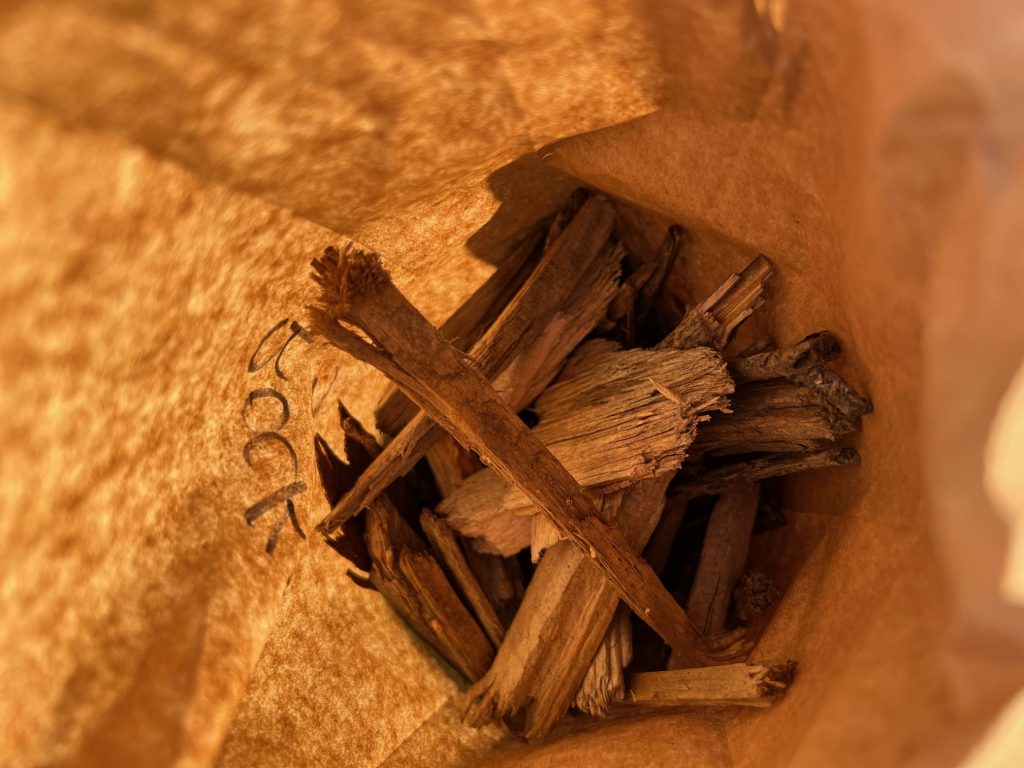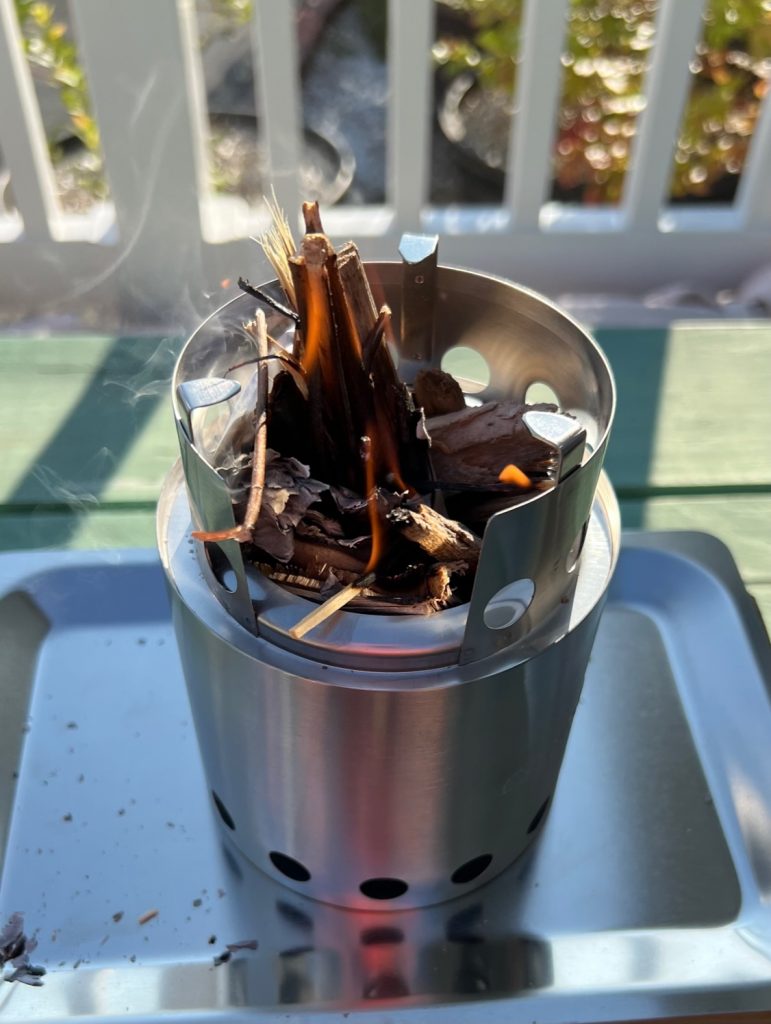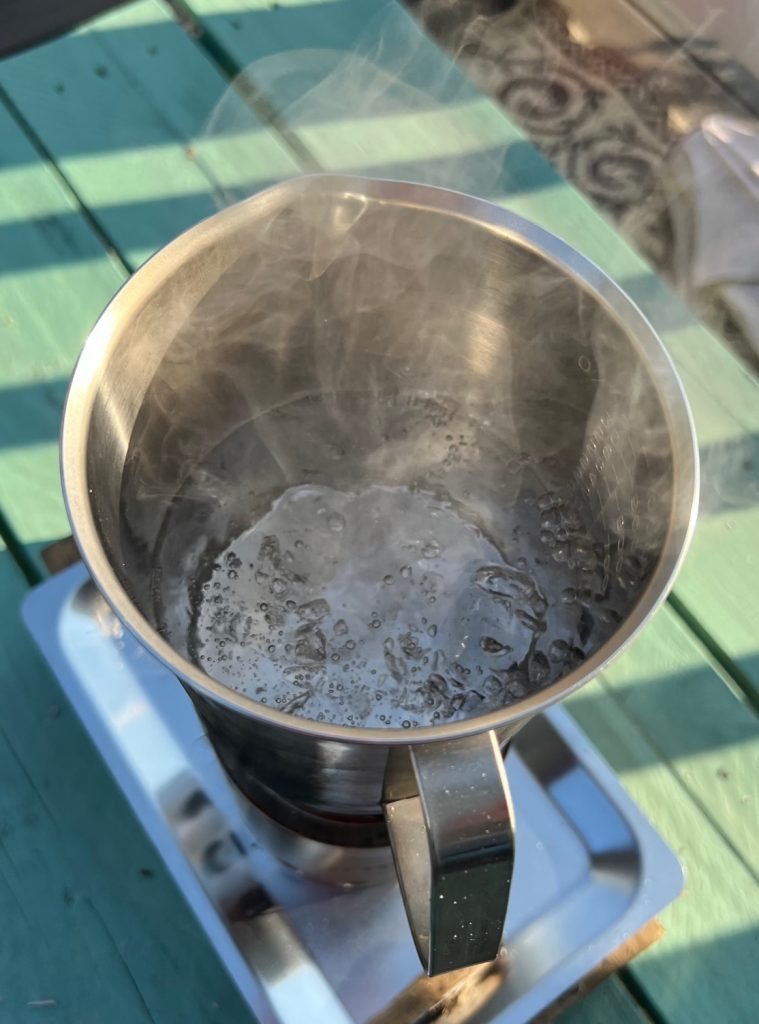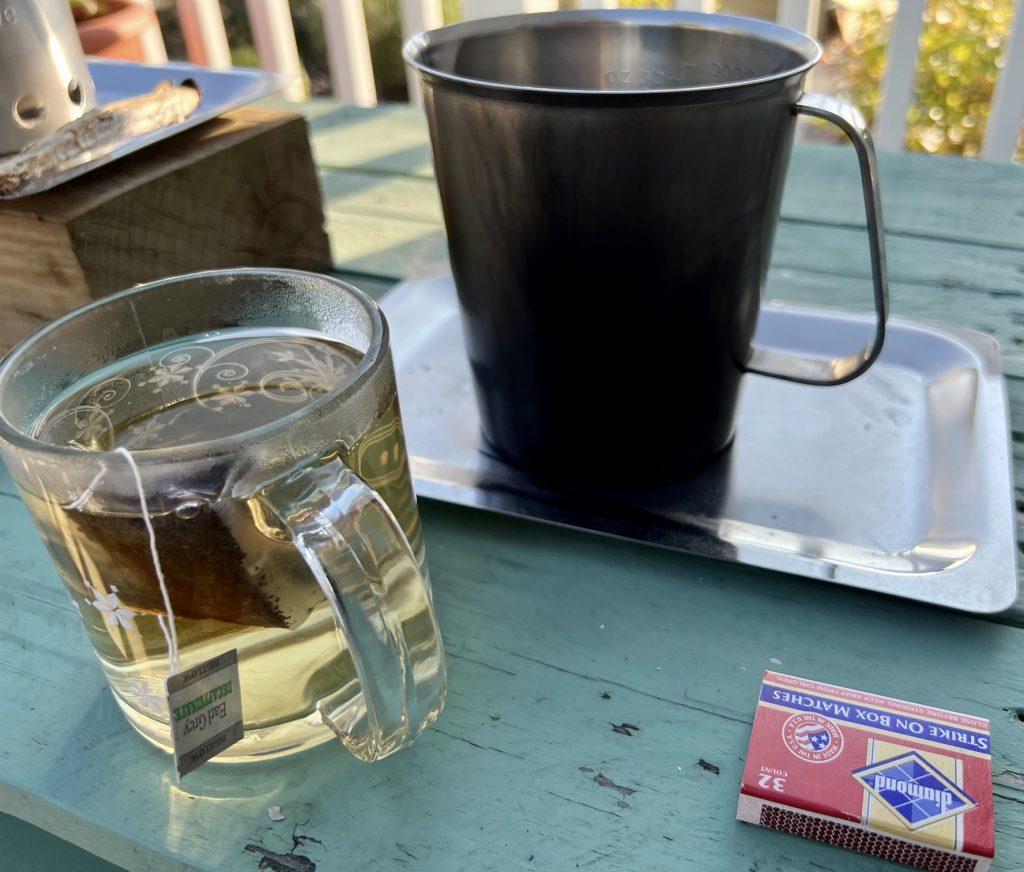
In the interest of observing National Preparedness Month, I made a new purchase. Admittedly I already have several alternate sources of cooking in my emergency supplies. I have a gas stove/oven in my kitchen, but I also have a small propane camp stove, a sterno-type stove, and a rocket stove which I have written about before which is about the size of a scrub bucket or one of those holiday popcorn tins.
But did I recently buy another smaller size rocket stove? Of course I did! My purpose in doing so was to have something which would use even less fuel (sticks and yard waste) if I only wanted to do a quick heat up job. Like say – heat some water for tea or make a single bowl of soup. This size stove would also work for backpacking or bug out, but that is the option of absolute last resort for me. I’m getting too old and cranky to carry everything I own on my back – if I can help it that is.
This Solo stove runs on “biomass” – sticks, pine cones, corn stalks, etc. And because of its smaller size, uses an even smaller volume of such biomass than my bigger rocket stove by Silverfire. This potentially conserves fuel during an emergency – especially if I am only cooking for myself.
When cleaning up my yard/garden every spring and fall I have taken to tossing the random pieces of broken up stick into a tub in my garage to save for emergency fuel. Thus I have a backlog of dry “biomass” to use in case of – gawd knows what.
But what if you live in an apartment or townhouse with a patio to have a small fire on, but don’t have a yard? What if your owners association or city maintenance dept are so on the ball that there are never sticks to gather even in the public spaces?
Experiment
I wanted to try an experiment. I wanted to see if this little stove would burn bigger chips of MULCH. Yes, the purpose of mulch is to suppress weeds and retain moisture, thus the mulch is almost always damp. But what if you gather big pieces when it is dry or what if you buy a bag of it to store for fuel? Fancy-schmancy mulch can be expensive. But I found stuff at Menards that looks like it is merely chipped up construction waste for 2 bucks a bag. This is what I spread between my garden raised beds, so I started picking up some of the bigger drier pieces for my experiment.

I did this experiment on my deck, on a coffee table I made out of pallet scraps. I used a hunk of wood and a metal tray to protect the table from excessive heat – just in case. It took only 13 minutes and literally a handful of dry wood chip mulch to boil 2 cups of water. And most of that time was spent in getting the fire really going. Within about 7 more minutes the fire had burned down/out and the stove was only warm to the touch. This was GREAT!




Met My Needs
This little stove met all my needs. I wanted something that would not require commercial fuel, that wouldn’t take an hour to produce hot coals, and that wouldn’t then need to be monitored for another hour while it burned back down. This little Solo Lite Stove was so quick and easy! The size is perfect for a get home bag and it cools off quickly enough to be stowed for getting back on the road in a reasonable time.
Fuel on Hand
Apartment/patio dwellers who don’t have a yard with sticks could consider buying a bag of big chunk mulch like this and keeping it in a Rubbermaid tote in a closet. Keeping emergency fuel on hand for a small stove like this would be a wise idea. And sticks are perfectly safe to store indoors – unlike some other fuels. For a stove this small you don’t need big wood or tree limbs – just sticks. You aren’t cooking a three course meal, you’re heating soup or boiling water to rehydrate your freeze dried Mountain House dinner. Keeping it simple is the best strategy. (Caveat that you should use this stove at your own risk. It is not recommended for use in an enclosed space or under a flammable overhang.)
Little pot(s)
One thing with using a very small stove like this is that the usual household pots/pan are often too big. Thus in the interests of preparedness I also bought a small pot from Solo into which the stove fits for storage.
I do (believe it or not) still possess my fifty year-old Girl Scout mess kit, but it is aluminum. (Do Girl Scouts even camp or cook over fire anymore? Or is that an anti-feminist global warming sin or something nowadays?) In a pinch the aluminum would be fine, but over the years I have moved away from using aluminum cookware and prefer stainless steel or cast iron if I can help it.
In addition to the pot that I bought, I also found a small stainless pitcher/pot in my gear which fits perfectly so that’s what I used for the experiment. As the saying goes, “Two is one, one is none.” So now I have two pots to fit my little Solo Lite Stove and I can have tea AND soup when the grid goes down.
This stove passed my test and did what I bought it for. If you are looking for a small camp stove for small jobs which runs on random fuel you find lying around, consider the Solo Lite. Even if you only need it once – it’s worth the cost if it saves your butt in an emergency.



